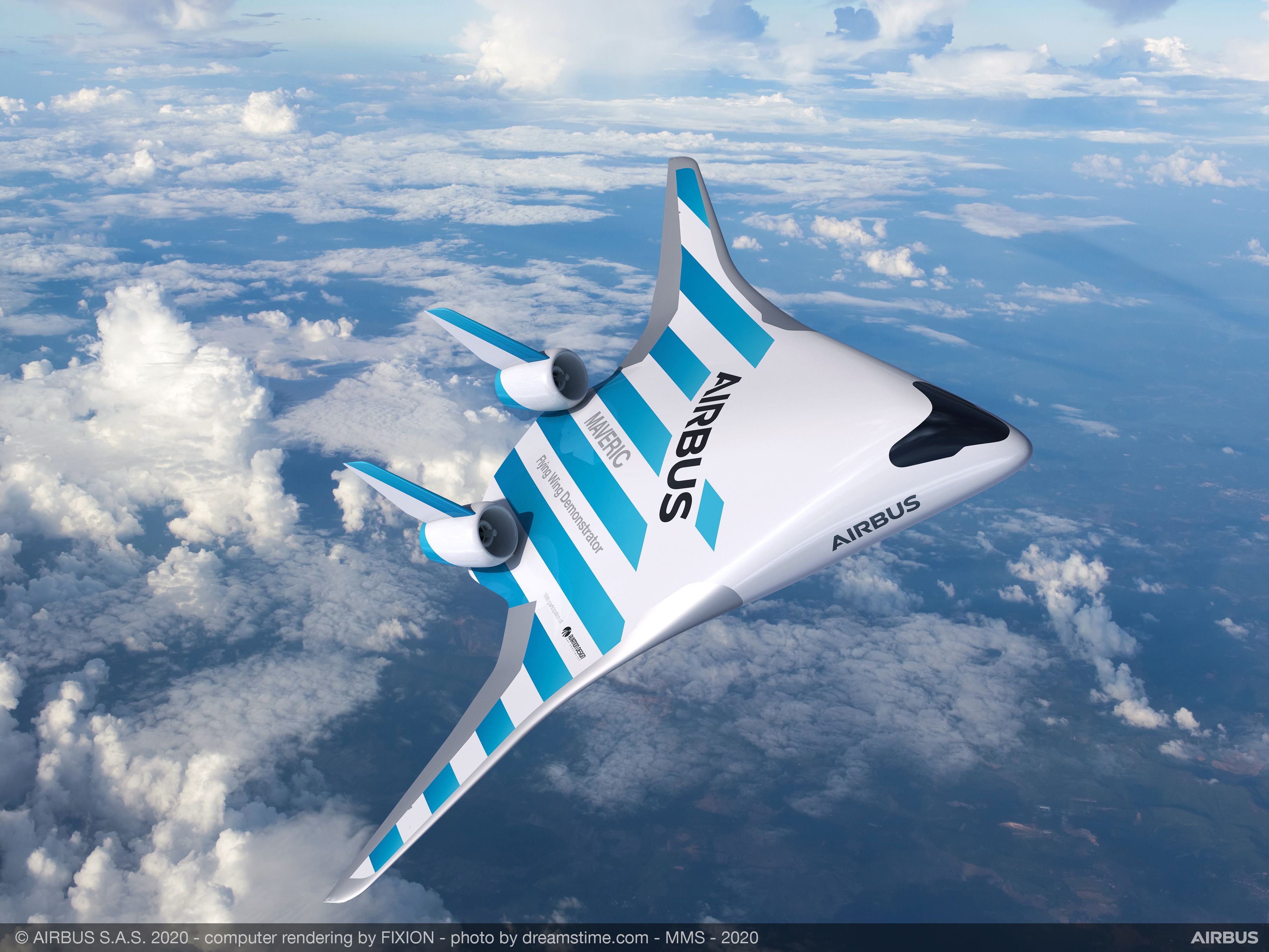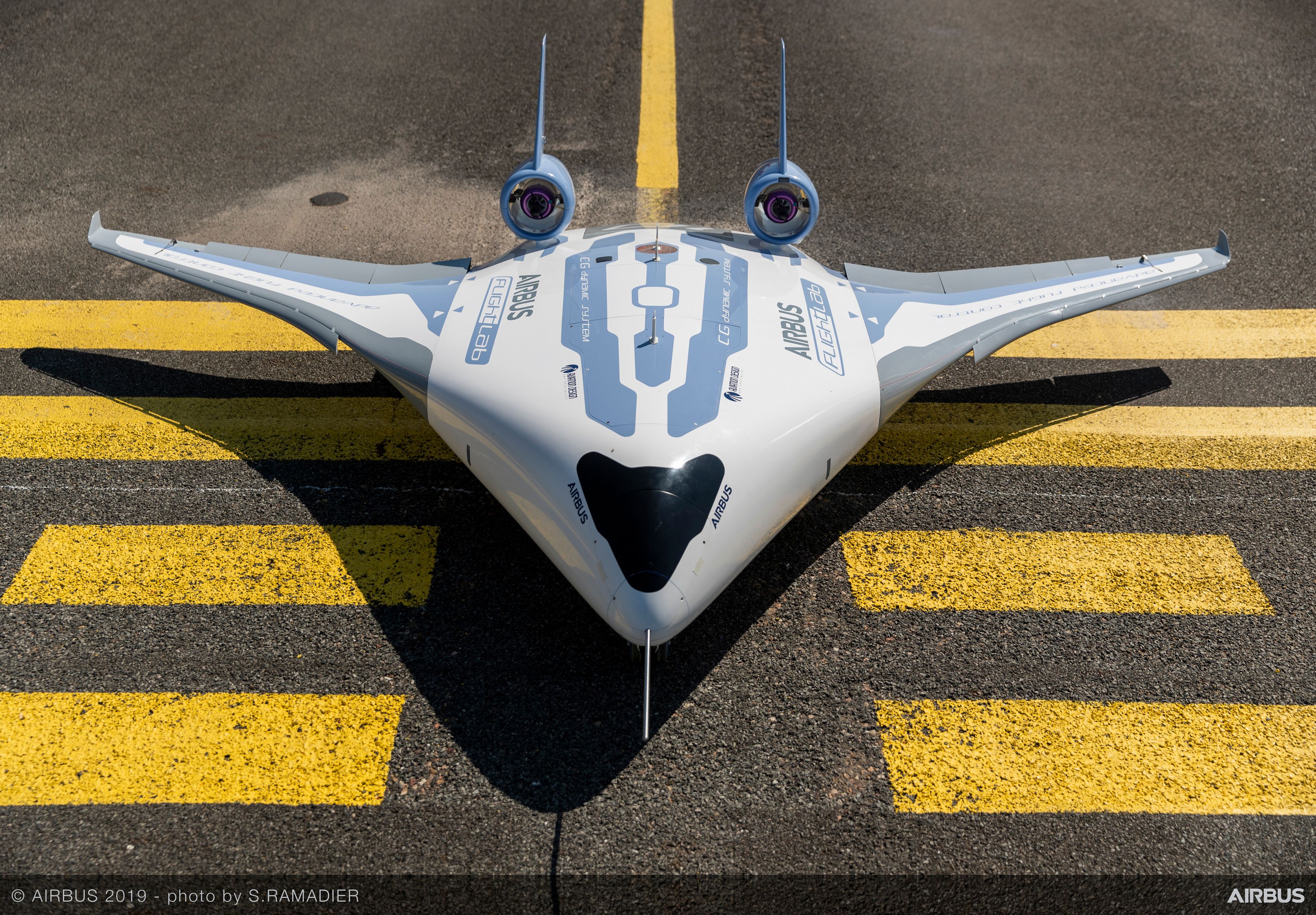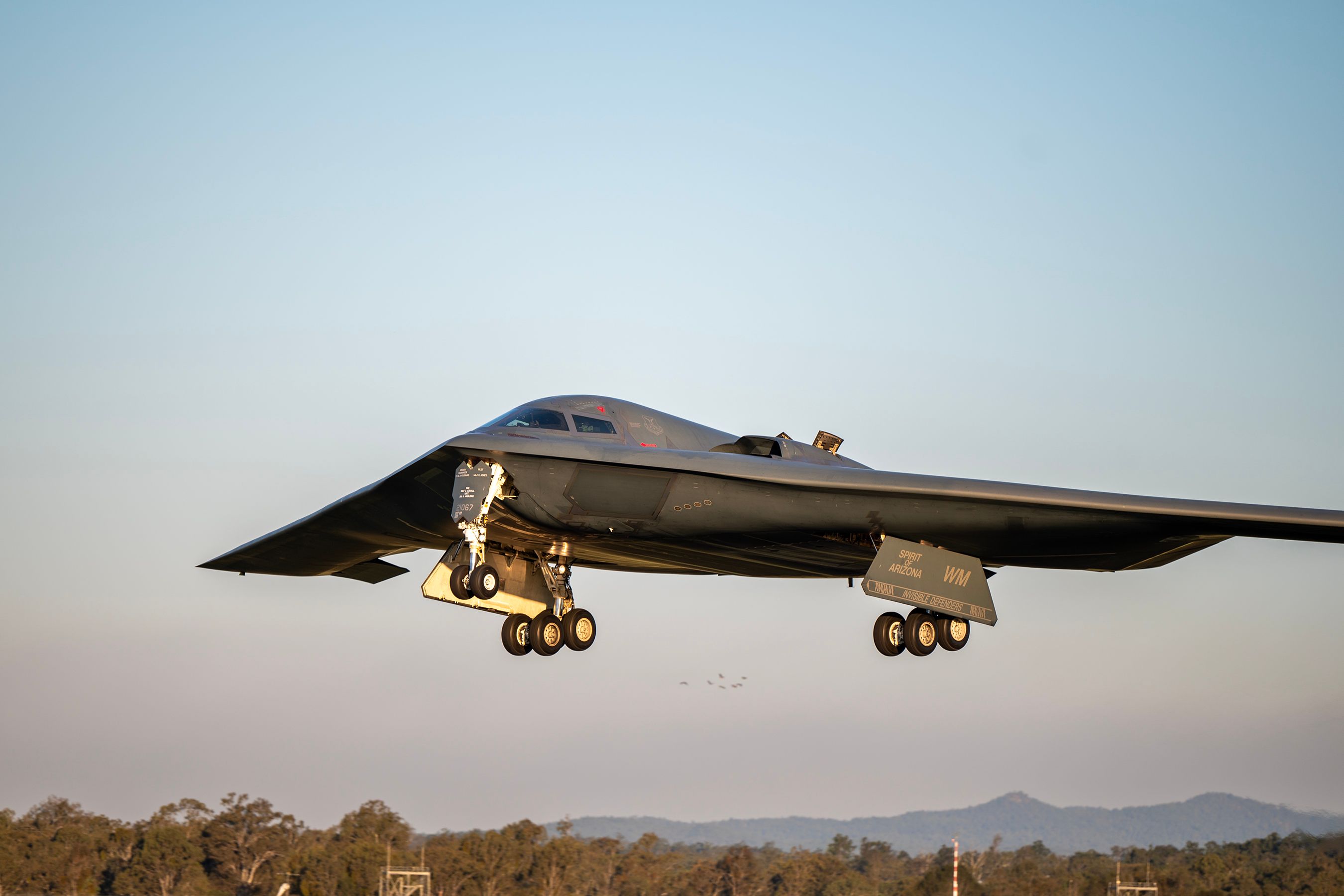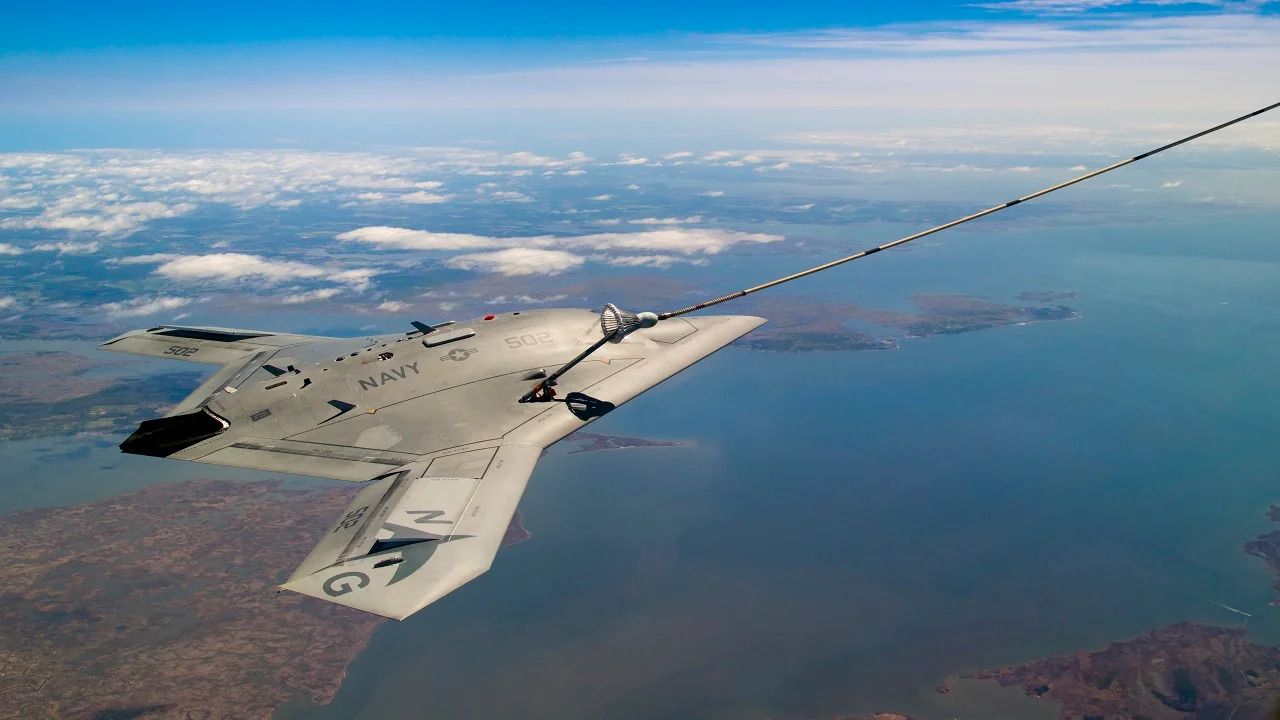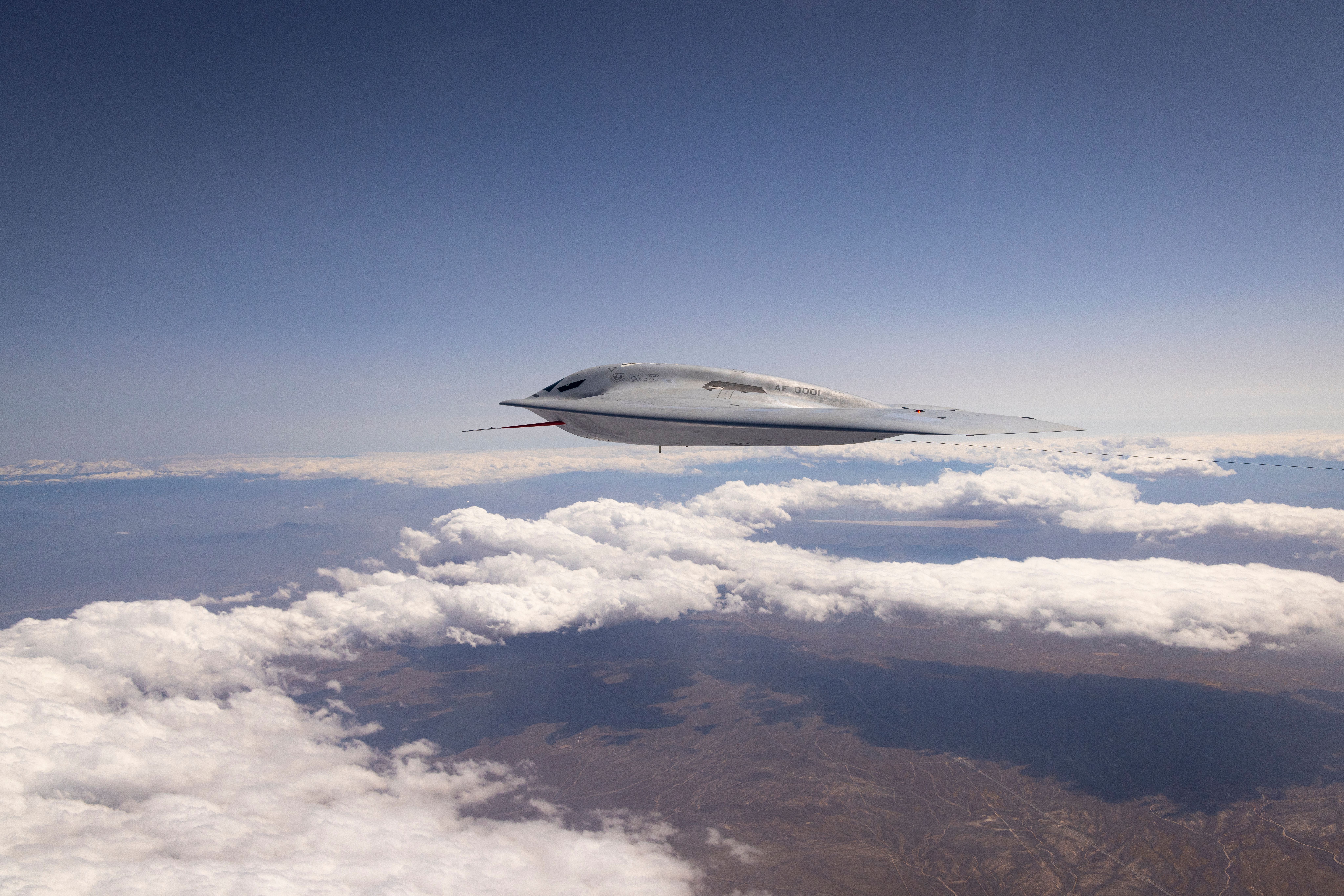
How Cranfield University Will Help Develop Blended Wing Aircraft Testbeds
Cranfield University is in pursuit of the next big breakthrough in the aviation world. To date, virtually every plane to take flight is the traditional “tube and wing” layout. Like any modern widebody or narrowbody jet, the plane has a long tube-like fuselage with wings that project outward to generate lift.
Today, many engineers and scientists want to change aircraft designs with a new lifting-body shape that can result in significant fuel and carbon emission savings. Cranfield is a major contributor to a collaborative effort in the European Union (EU) called “EXAELIA,” and their mission statement reads:
“Address the need for more radical changes in long range aircraft configurations and propulsion concepts to drastically cut carbon emissions of long-range flights and to accelerate the potential entry-into-service of such aircraft to before 2050.”
Photo: NASA
Their idea is for a design where the fuselage and wing are combined into a single shape using what’s called blended wing body (BWB) technology. By optimizing airflow, this airplane shape will reduce aerodynamic drag while also increasing interior space. Simultaneously, scientists hope to test hydrogen or other propulsion concepts and incorporate them into future airframes.
Worldwide air travel and freight services depend on air transport. However, in order to address climate issues, aviation’s environmental impact needs to be addressed and that demands revolutionary changes. This has led the aviation industry and community to rethink the fundamental geometry of the airplane, emphasizing efficiency improvements.
Cranfield University
The 2016 PhD thesis of Paulinus Peter Chukwuemeka Okonkwo gives us an insight into how Cranfield’s academic community and faculty are focused on making an impact on the world of aviation through their role in the EXAELIA program.
The main point is that growing environmental demands and the need for lower operating costs have combined to push the actualization of the BWB aircraft. The BWB integrates the payload into a lift-generating center-body blended with outer wings, improving aerodynamic performance, fuel efficiency, and noise characteristics to address global aviation concerns.
Key benefits of the BWB include:
- Up to 27% fuel burn reduction per seat.
- 15–20% higher lift-to-drag (L/D) ratio.
- 33% reduction in wetted surface area.
- Lower operating empty weight by 12%.
- Quieter operations due to the absence of flaps and tailplane.
Although the BWB resembles a flying wing, it differs by using a flattened fuselage for payload instead of a pure wing structure.
Photo: Airbus
Studies have found the BWB had the best noise profile among 96 different aerodynamic configurations, scoring 64.3% in noise evaluation metrics compared to 58.7% for conventional designs. Despite these advantages, the BWB has yet to enter commercial service due to challenges in stability, control, propulsion-airframe integration, and complex trade-offs due to tightly coupled disciplines.
A recent project at Cranfield’s AIRC has developed a fixed base simulator to explore the human factors aspects of future hydrogen aircraft. The cockpit model is based on an A320’s, but with added touchscreens and glass.
By investing £69 million to establish the first large-scale hydrogen research facility at any UK airport, Cranfield University—which also owns and runs Cranfield Airport—is at the forefront of investigating innovative aircraft designs and the possibilities of hydrogen in aviation.
Airbus MAVERIC
The ten-person MAVERIC (Model Aircraft for Validation and Experimentation of Robust Innovative Controls) project team, part of Airbus UpNext’s Flight Lab team, developed the MAVERIC concept from a sketch to a 3D computer-generated model and finally, a scale aircraft demonstrator.
Wind tunnel testing was conducted at Airbus’ Filton site in the UK to verify its aerodynamic characteristics. The demonstrator, which is 2 meters long and 3 meters wide, has been built with the same precision as any other Airbus aircraft.
Photo: Airbus
The MAVERIC demonstrator has the potential to deliver significant environmental performance benefits, such as approximately 20% less fuel burn compared to current single-aisle models with the same engine. Additionally, the aircraft could significantly improve the passenger experience, with a wide cabin layout and larger aisles.
“Airbus is leveraging emerging technologies to pioneer the future of flight. By testing disruptive aircraft configurations, Airbus is able to evaluate their potential as viable future products,” said Jean-Brice Dumont, EVP Engineering Airbus
.
He went on to say, “although there is no specific time line for entry-into-service, this technological demonstrator could be instrumental in bringing about change in commercial aircraft architectures for an environmentally sustainable future for the aviation industry.”
MAVERIC by the numbers
- Length: 2 m (6.6 ft)
- Wingspan: 3.2 m (10.5 ft)
- Surface Area: Approximately 2.25 m² (24.2 ft²)
- Fuel Consumption Reduction: Up to 20% compared to single-aisle aircraft
- First Flight: June 2019
Adrien Bérard, MAVERIC Project Co-Leader, said: “At Airbus, we understand society expects more from us in terms of improving the environmental performance of our aircraft. MAVERIC’s blended wing body configuration is a potential game-changer in this respect, and we’re keen to push the technology to the limit.”
NASA and Boeing’s BWB
NASA
and ![]() Boeing
Boeing
have completed a successful flight test project at NASA’s Dryden Flight Research Center, completing 122 flights, 30 of which were as the C-model. The X-48C Hybrid Wing Body technology demonstrator, designed by The Boeing Co. and built by Cranfield Aerospace Limited of the United Kingdom, was modified to evaluate the low-speed stability and control of a low-noise version of a notional, future Hybrid Wing Body (HWB) aircraft design.
The HWB design stems from concept studies being conducted by NASA’s Environmentally Responsible Aviation project of future potential aircraft designs 20 years from now. The X-48C retained most dimensions of the B model, with a wingspan just longer than 20 feet and a weight of about 500 pounds.
The project team modified the flight control system software, including flight control limiters, to keep the airplane flying within a safe flight envelope. This enabled a stronger and safer prototype flight control system suitable for further development for potential full-scale commercial hybrid or blended wing aircraft in the future.
“Our team at NASA Dryden has done what we do best, flight test a unique aircraft and repeatedly collect data that will be used to design future ‘green’ airliners,” said Heather Maliska, NASA Dryden’s X-48C project manager. “It is bittersweet to see the program come to an end, but we are proud of the safe and extremely successful joint Boeing and NASA flight test program that we have conducted.”
X-48C by the numbers
- Winglets: Relocated from the wingtips to positions inboard next to the engines, creating twin vertical tails
- Rear Fuselage Extension: Aft deck stretched by about 2 ft (0.6 m)
- Engines: Replaced the three 50 lb (22.7 kg) thrust units with two 89 lb (40.4 kg) thrust engines
- Wingspan: Slightly over 20 ft (6.1 m)
- Weight: Approximately 500 lb (226.8 kg)
- Estimated Top Speed: About 140 mph (225 km/h)
- Ceiling: Up to 10,000 ft (3,048 m)
Today’s flying wings
The B-2 Spirit Bomber
is still the only flying wing aircraft in active service. It was developed for the United States Air Force
‘s penetration missions, allowing deep penetration into enemy territory for ordnance deployment. Its low-observable technologies, high aerodynamic efficiency, and large payload make it superior to previous bombers.
The B-2 Spirit’s development required a massive investment in computer-aided design and manufacturing technologies to achieve the final production airplane.
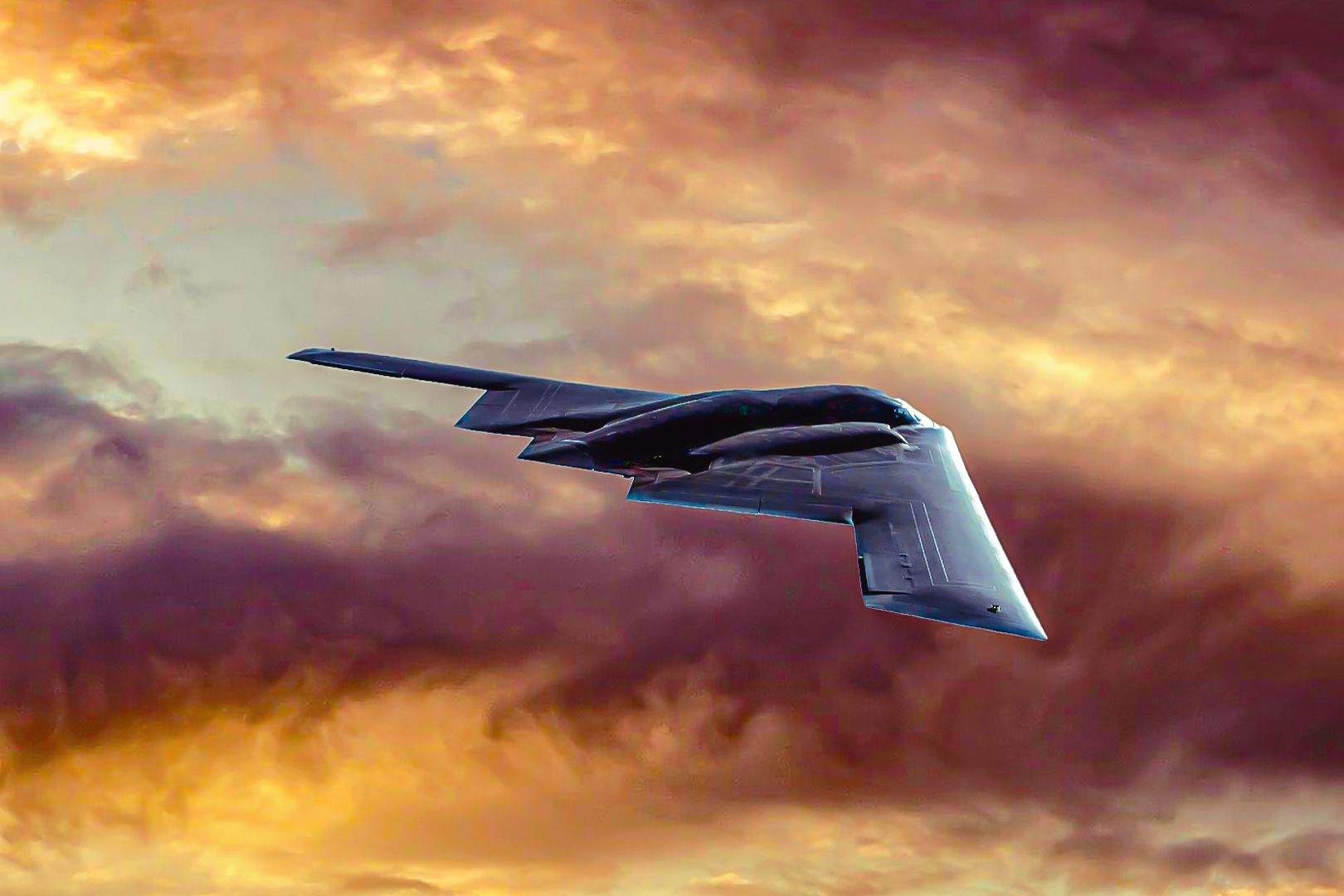
Related
Why The B-2 Spirit Remains Critical To US Defense
Northrop Gumman’s B-2 Spirit has unmatched stealth, power, and global reach that make it an irreplaceable asset in US defense strategy.
Photo: US Air Force
Photo: US Air Force
The Northrop Grumman
B-2 Spirit
-
Power plant: four
General ElectricF118-GE-100 engines
- Thrust: 17,300 pounds each engine (17,300 pounds / 7,847 kilograms of thrust each)
- Wingspan: 172 feet (52.12 meters)
- Length: 69 feet (20.9 meters)
- Height: 17 feet (5.1 meters)
- Weight: 160,000 pounds (72,575 kilograms)
- Maximum takeoff weight: 336,500 pounds (152,634 kilograms)
- Fuel capacity: 167,000 pounds (75,750 kilograms)
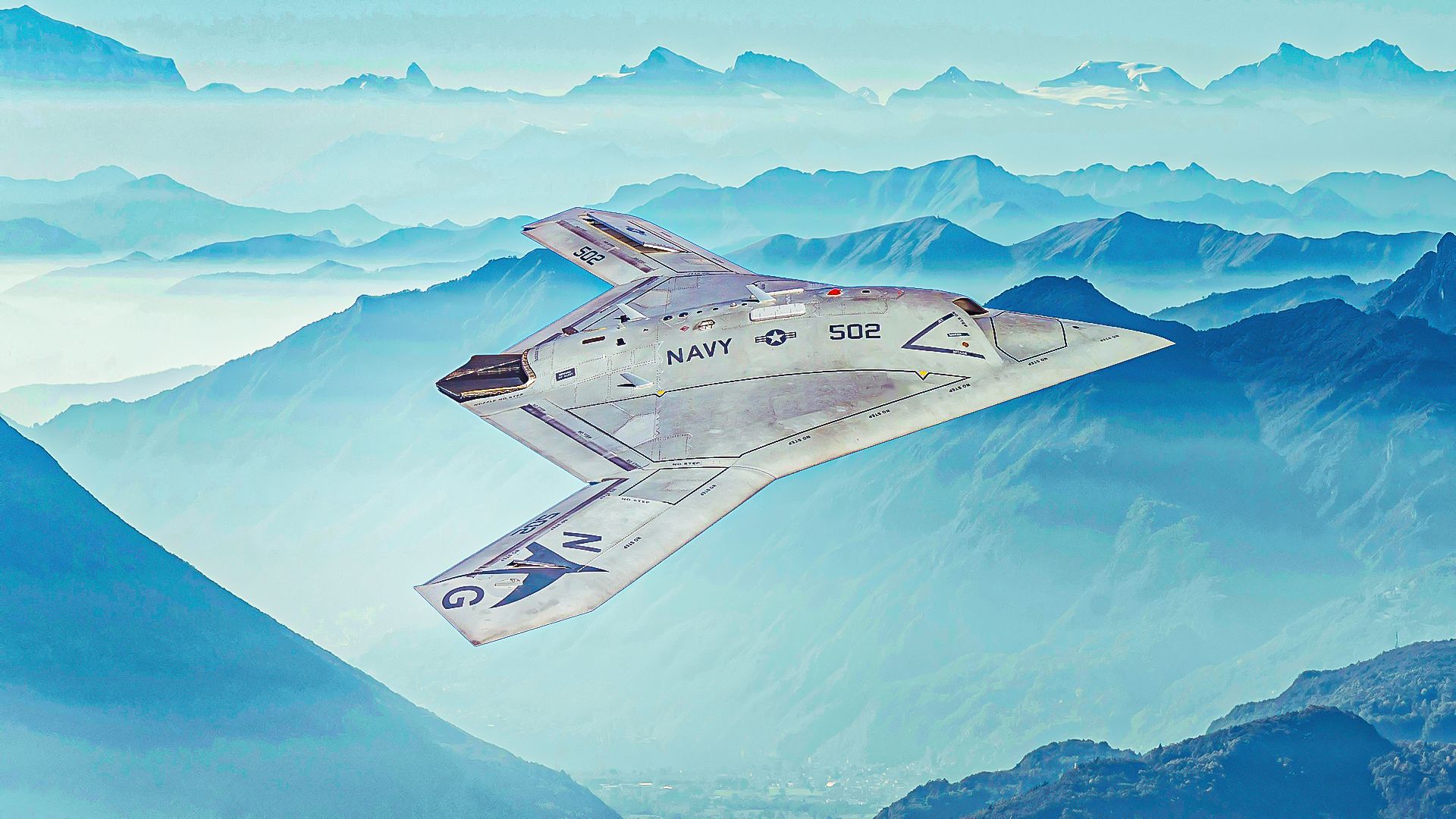
Related
Northrop Grumman X-47B / MQ-47: How the US Navy’s New Combat Drone Will Support Carrier Air Wing
The MQ-47 is a groundbreaking drone, combining advanced AI, stealth features, and enhanced avionics, posed to transform modern air warfare.
As part of the Unmanned Combat Air System Carrier Demonstration (UCAS-D) program, the US Navy
developed the X-47B UCAS. Developing and demonstrating which fighter-sized tailless unmanned aircraft can be launched from US Navy aircraft carriers is the program’s goal.
Photo: US Air Force
The Northrop Grumman X-47B UCAS
- Name: X-47B Unmanned Combat Air System (UCAS)
- Operator: US Navy
- Service Entry: April 2019
- Length: 38.2 ft (11.6 m)
- Wingspan: 62.1 ft (18.9 m)
-
Power Plant:
Pratt & WhitneyF100-PW-220U engine
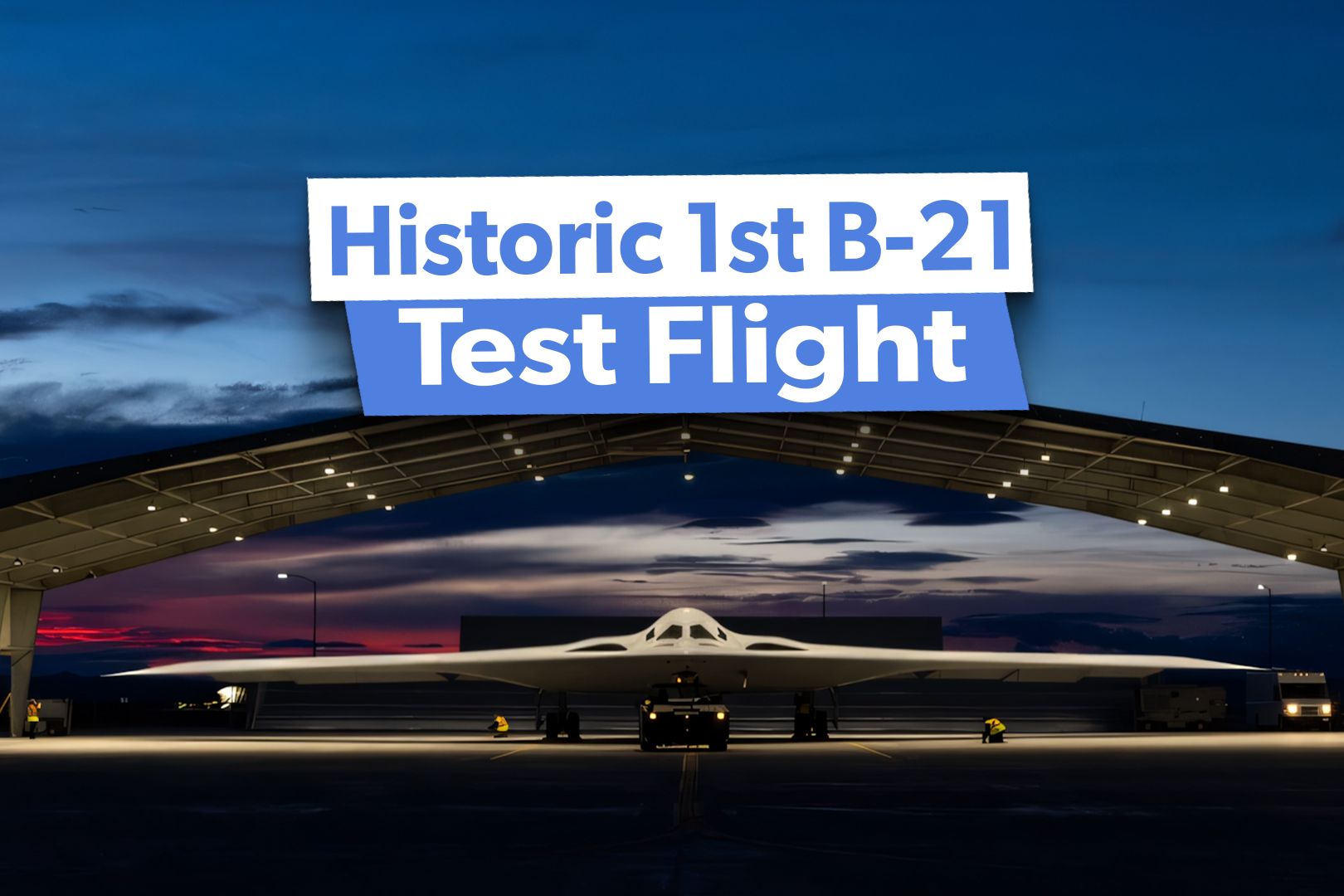
Related
In Pictures: A Look Back At The Historic 1st B-21 Raider Test Flight At Edwards Air Force Base
In 2024, the B-21 Raider soared over Edwards AFB in a historic achievement to unconventional aircraft designs and stealth technology.
The Northrop Grumman B-21 Raider
is an American strategic bomber developed by Northrop Grumman for the US Air Force. Named “Raider” in honor of World War II Doolittle Raiders, it aims to replace the Rockwell B-1 Lancer and Northrop B-2 Spirit by 2040.
Photo: US Air Force
The B-21 Raider
- Unveiled: Dec. 2, 2022
- First Flight: Nov. 10, 2023 (unofficial)
- Production: ≥100 (projected)
- Inventory: 1
- Operator: AFMC. Planned: AFGSC
- Aircraft Location: Air Force Plant 42, Calif., Edwards AFB, Calif. (planned testing), Ellsworth AFB, N.D., Whiteman AFB, Mo., Dyess Air Force Base, Texas (all planned)
- Dimensions: Span 150 ft. (estimated, approximate), Height 18 ft. (estimated, approximate)
- Weight: Max T-O unknown.
- Powerplant: Pratt & Whitney turbofans.
- Performance: Speed high-subsonic (estimated), range intercontinental.
- Armament: Nuclear and conventional (planned)
- Accommodation: Crewed/Optionally Uncrewed.
EXAELIA Partnership
The Association of European Research Establishments in Aeronautics [EREA] has nine partners. The collaboration already has a track record in developing flying test beds, conducting flight testing, and conceptualizing and analyzing future aircraft. The partners are dispersed among thirteen European nations, which together account for a sizeable share of the continent’s aviation sector.
- NLR: Stichting Koninklijk Nederlands Lucht- en Ruimtevaartcentrum – Netherlands
- ONERA: Office National d’Études et de Recherches Aérospatiales – France
- DLR: Deutsches Zentrum für Luft- und Raumfahrt e.V. – Germany
- CIRA: Centro Italiano Ricerche Aerospaziali SCPA – Italy
- ILOT: Sieć Badawcza Łukasiewicz – Instytut Lotnictwa – Poland
- INTA: Instituto Nacional de Técnica Aeroespacial “Esteban Terradas” – Spain
- INCAS: Institutul Național de Cercetare-Dezvoltare Aerospațială “Elie Carafoli” – Romania
- AIT: Austrian Institute of Technology GmbH – Austria
- CEIIA: Centro de Engenharia e Desenvolvimento (Associação) – Portugal
- CU: Cranfield University – United Kingdom
- USTUTT: Universität Stuttgart – Germany
- UPAT: Panepistimio Patron – Greece
- TUD: Technische Universiteit Delft – Netherlands
- HIT09: HIT09 SRL – Italy
- EASN-TIS: EASN Technology Innovation Services BVBA – Belgium
- CHALMERS: Chalmers Tekniska Högskola AB – Sweden
- AUTH: Aristotelio Panepistimio Thessalonikis – Greece
- ISAE: Institut Supérieur de l’Aéronautique et de l’Espace – France
- BHL: Bauhaus Luftfahrt e.V. – Germany
- TUBS: Technische Universität Braunschweig – Germany
- OA: Orange Aerospace Group BV – Netherlands
- UNINA: Università degli Studi di Napoli Federico II – Italy
- LUP: LUP SAS – France
